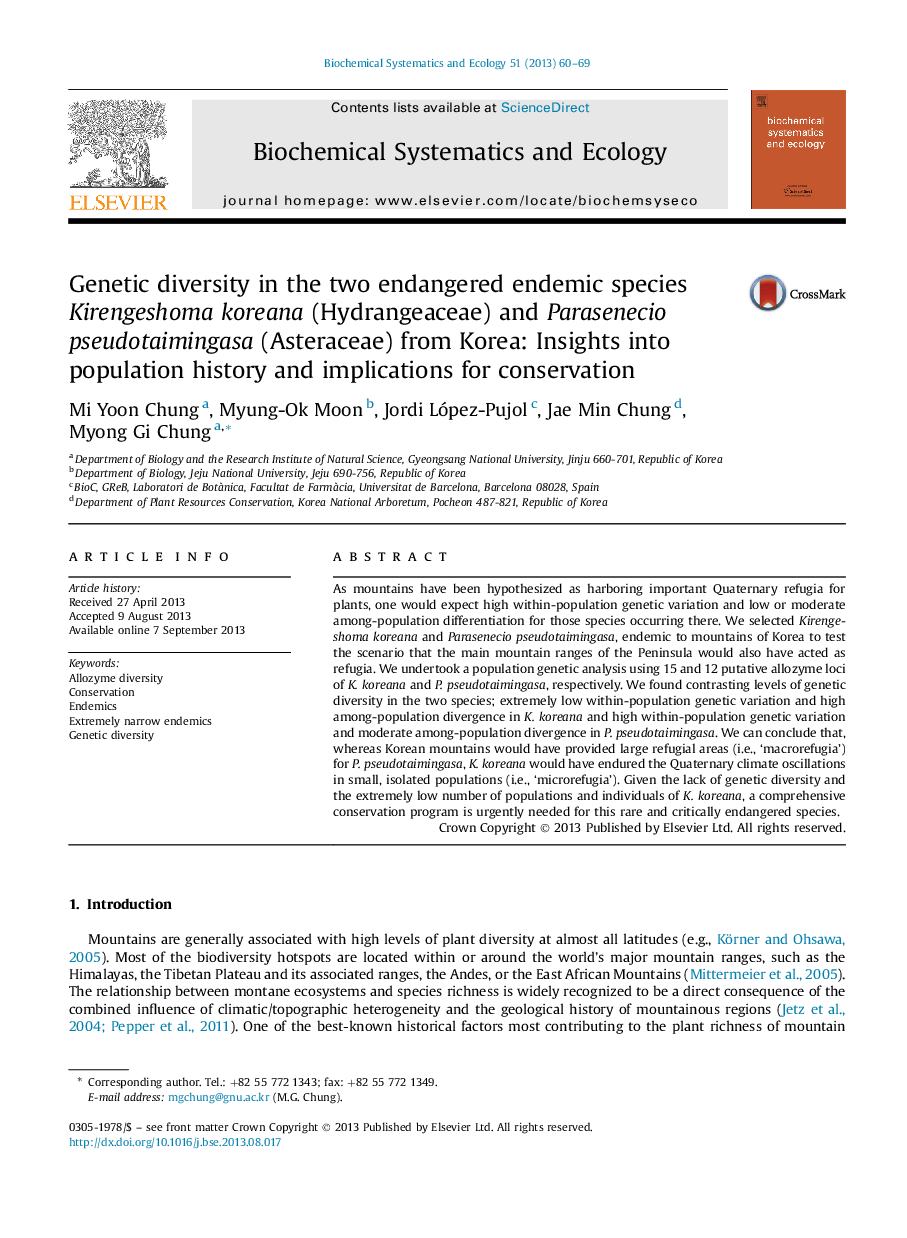| Article ID | Journal | Published Year | Pages | File Type |
|---|---|---|---|---|
| 7769028 | Biochemical Systematics and Ecology | 2013 | 10 Pages |
Abstract
As mountains have been hypothesized as harboring important Quaternary refugia for plants, one would expect high within-population genetic variation and low or moderate among-population differentiation for those species occurring there. We selected Kirengeshoma koreana and Parasenecio pseudotaimingasa, endemic to mountains of Korea to test the scenario that the main mountain ranges of the Peninsula would also have acted as refugia. We undertook a population genetic analysis using 15 and 12 putative allozyme loci of K. koreana and P. pseudotaimingasa, respectively. We found contrasting levels of genetic diversity in the two species; extremely low within-population genetic variation and high among-population divergence in K. koreana and high within-population genetic variation and moderate among-population divergence in P. pseudotaimingasa. We can conclude that, whereas Korean mountains would have provided large refugial areas (i.e., 'macrorefugia') for P. pseudotaimingasa, K. koreana would have endured the Quaternary climate oscillations in small, isolated populations (i.e., 'microrefugia'). Given the lack of genetic diversity and the extremely low number of populations and individuals of K. koreana, a comprehensive conservation program is urgently needed for this rare and critically endangered species.
Related Topics
Physical Sciences and Engineering
Chemistry
Organic Chemistry
Authors
Mi Yoon Chung, Myung-Ok Moon, Jordi López-Pujol, Jae Min Chung, Myong Gi Chung,
